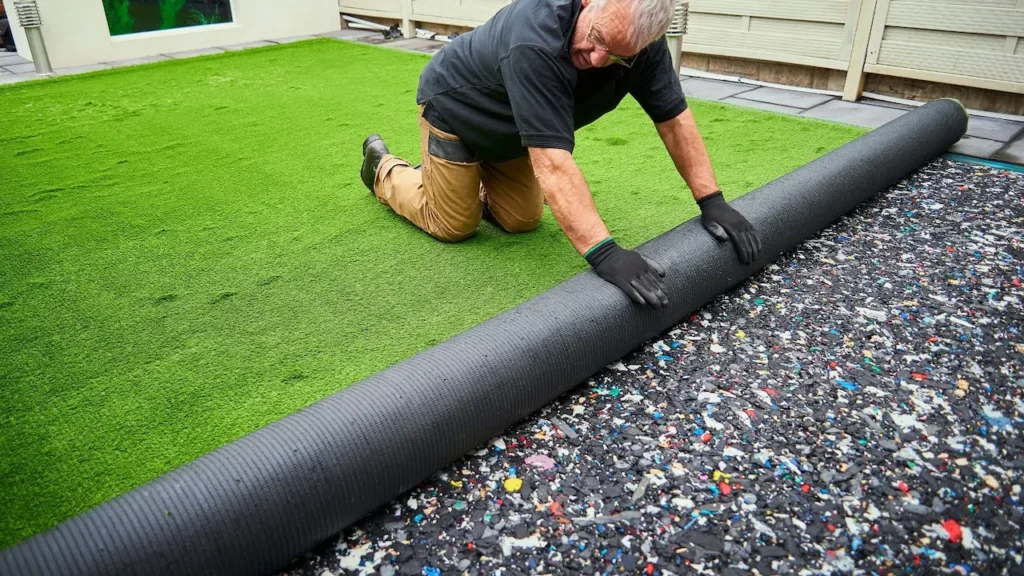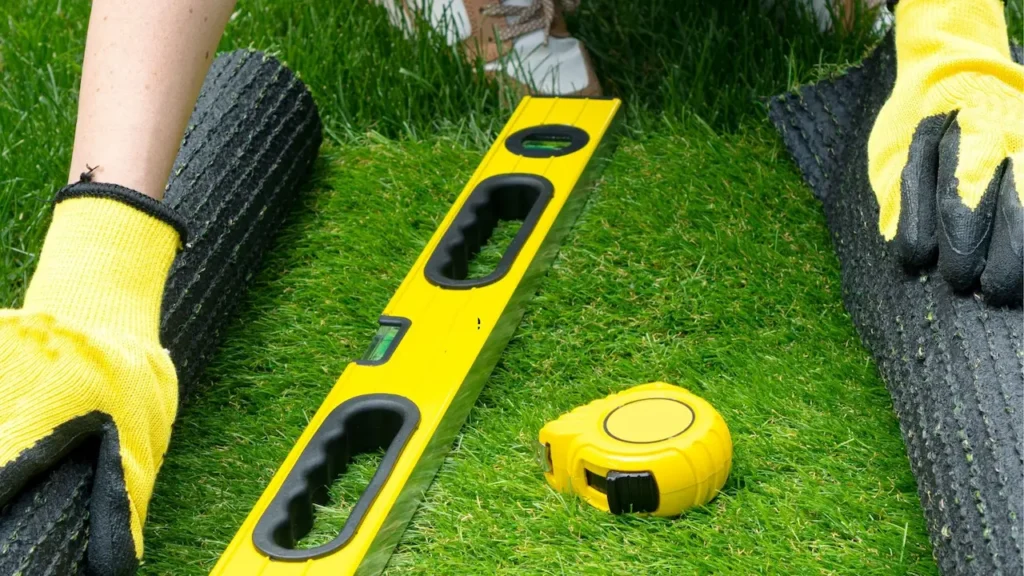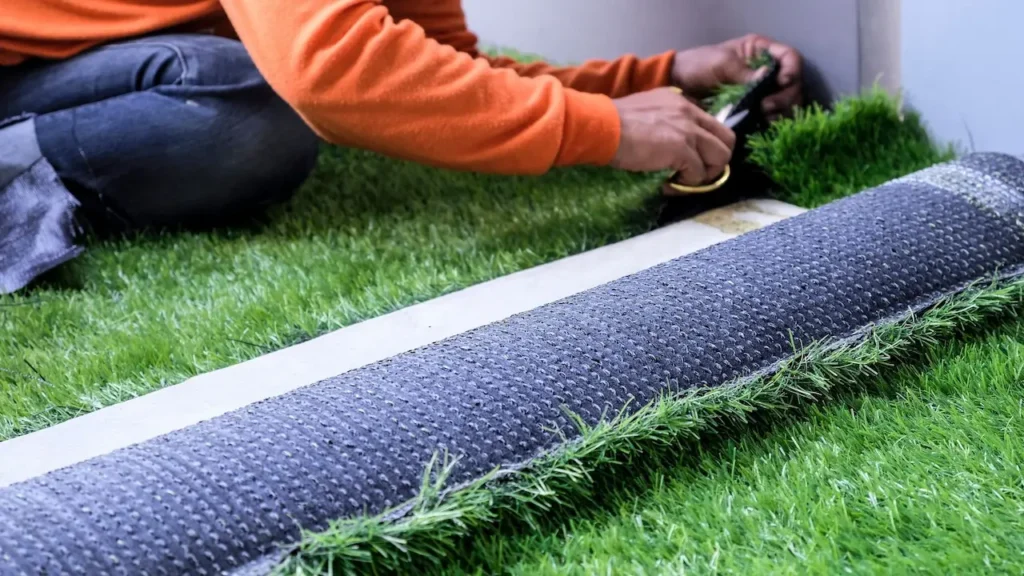Artificial grass has become a popular alternative to natural lawns due to its low maintenance, cost-effectiveness, and environmental benefits. Whether you’re looking to spruce up your garden, create a pet-friendly area, or install it for a commercial space, knowing how to lay artificial grass properly is key to achieving a professional look.
Artificial grass has become increasingly popular in Australian landscaping, offering a lush, green synthetic lawn without the hassle of constant maintenance. Artificial Grass Gold Coast specialises in premium artificial turf products and expert installation services.
In this article, we will explore a detailed step-by-step guide on how to lay artificial grass, the benefits it offers, maintenance tips, and common questions answered.

Table of Contents
ToggleWhat You Need For Your Artificial Grass Installation
Installing artificial grass can be a rewarding DIY project that transforms your outdoor space into a lush, low-maintenance oasis. To get started, it’s crucial to gather all the necessary tools and materials beforehand. Being fully prepared will help ensure a smooth and efficient artificial turf installation process, saving you time and effort along the way.
Artificial Turf Products
You’ll need to choose the right type of artificial turf for your project. There are various options available, from short, dense turf perfect for high traffic areas to longer, more luxurious styles for residential gardens. Artificial Grass Gold Coast offers a wide range of synthetic turf to suit different needs and budgets. Find out how much is artificial grass costs to make an informed decision.
General Tools
- Shovel: For digging and clearing the ground.
- Rake: To level the surface and remove debris.
- Wheelbarrow: For moving soil, sand, and other materials.
Special Tools
- Turf Cutter: A specialised tool to help cut the turf into precise shapes.
- Joining Tape: To securely attach sections of turf together.
- Turf Roller: Used to smooth out the surface and ensure proper adhesion of the turf.
Now that you’ve gathered the necessary tools and materials, let’s dive into the installation guide of lay artificial turf.
Step-by-Step Guide to Laying Artificial Grass

Step 1: Measure the Area
Before you begin, measure the area where you plan to install synthetic grass. This will help you determine how much turf you need. Be sure to add a little extra for trimming and seams.
Step 2: Remove the Existing Surface
Clear away any existing real grass, plants, and debris. If you’re installing on soil, you’ll need to remove about 40–50mm of the surface to allow room for the base material.
Step 3: Compact the Surface
Once the surface is clear, compact the ground using a roller or plate compactor. This will create a solid foundation for the artificial grass and prevent any uneven areas.
Step 4: Lay a Sand or Stone Base
Next, lay a base of crushed stone or sand to ensure proper drainage. Use sand spreader it evenly across the area and compact it down. This base will help stabilise the fake turf and keep it in place.
Step 5: Roll Out the Artificial Turf
Roll out the artificial turf over the prepared base, ensuring the grass fibres all face the same direction for a uniform look. If you have multiple pieces, make sure to leave a small gap at the seams for the joining tape.
Step 6: Join the Pieces Together
Use joining tape and adhesive to connect any pieces of turf. Press the seams together firmly and ensure they align correctly to avoid visible gaps.
Step 7: Trim and Brush the Turf
Trim the edges of the existing turf to fit the area perfectly. Once everything is in place, brush the turf with a stiff broom to lift the fibres and make the artificial lawn look more natural.
Best Practices and Common Mistakes to Avoid
- Proper Drainage: Ensure the base is properly compacted and graded to allow water to drain through. Poor drainage can lead to puddles and damage to the turf over time.
- Avoid Uneven Surfaces: Take your time during the compaction process to avoid bumps or dips in the final surface.
- Secure the Edges: Make sure the edges are securely fixed in place to prevent the turf from shifting or lifting over time.
Maintenance Tips for Long-Lasting Artificial Turf
Even though artificial grass requires minimal maintenance, following these tips will help keep it looking its best for years.
Cleaning and Upkeep Guidelines
- Remove Debris: Regularly remove leaves, dirt, and other debris from the surface to prevent them from settling into the turf.
- Brush the Turf: Use a stiff broom to brush the fibres upright, especially in high-traffic areas.
- Spot Clean Stains: If you have pets or accidental spills, clean the affected area with water and a mild detergent to prevent staining.
For more detailed cleaning steps, check out our guide on how to clean artificial grass.
Our Favourite Tips
- Handle Edges with Care: Pay extra attention to the edges when trimming to ensure a clean, precise finish.
- Seam Lines: Avoid visible seams by aligning the turf pieces carefully and securing them well.
- Proper Drainage: Make sure your base allows for proper drainage to avoid water pooling and extending the life of your artificial grass.

The Advantage of Laying Artificial Turf
Artificial grass has grown in popularity due to its numerous benefits, making it a go-to choice for both residential and commercial spaces. From its low maintenance needs to its versatility, artificial turf provides a range of advantages that natural grass simply can’t offer.
Pet-Friendly and Durable
One of the biggest benefits of artificial grass is its pet-friendly nature. It’s easy to clean, doesn’t get muddy, and stands up well to the wear and tear that comes with pets running, playing, and digging. Unlike natural grass, artificial turf won’t develop brown spots from pet urine, and waste is easily cleaned up with water.
DIY Artificial grass is designed to be tough and durable, making it ideal for families with pets. It retains its appearance and functionality even with heavy use, ensuring a long-lasting, beautiful lawn that your pets can enjoy.
Cooler Turf Technology
Thanks to advancements in artificial turf technology, many modern products now come with cooling properties. In Australia’s hot climate, this feature is essential. Traditional synthetic grass can absorb and retain heat, making it uncomfortable to walk on during hot summer days. However, with newer cooling technology, artificial grass remains cooler underfoot, allowing you to enjoy your outdoor spaces even in the hottest weather.
Easy to Maintain
Artificial grass requires minimal upkeep compared to natural lawns. There’s no need for mowing, watering, or fertilising, which saves both time and money. This makes fake grass an excellent option for those looking to reduce the hassle of lawn care while still maintaining a green, lush-looking space all year round.
Aesthetic Appeal Year-Round
Unlike natural grass that can brown or wither in harsh weather, artificial grass maintains its vibrant, green appearance year-round. Whether it’s the middle of summer or winter, your lawn will always look fresh and well-maintained. This makes artificial turf perfect for areas that are prone to dry spells or extreme weather conditions, ensuring a beautiful outdoor space no matter the climate.
Conclusion
Laying artificial grass can be a straightforward process if you follow the correct steps and use the right tools. Whether you’re looking for a low-maintenance solution for your home or a durable option for commercial spaces, artificial grass is an excellent choice. By following our guide, you’ll have a professional-looking lawn that lasts for years.
If you need to purchase high-quality products and expert installation services, visit Artificial Grass Gold Coast today and transform your outdoor space!
People Also Ask
How do you prepare the ground for artificial grass?
Preparing the ground for artificial grass involves removing any existing vegetation or grass, levelling the area, and compacting the soil. A stable and well-drained base is essential to prevent the turf from shifting or pooling water.
What should you put down before laying artificial grass?
Before laying artificial grass, a base layer of crushed rock or sand should be spread and compacted. This helps stabilise the turf and ensures proper drainage, preventing water from pooling underneath.
Can I just lay artificial grass on soil?
No, it is not recommended to lay artificial grass directly on soil. Doing so can lead to poor drainage, bumps, and uneven surfaces. It’s important to first create a stable base using a layer of compacted sand or stone for better results.
What is the best base for artificial grass?
The best base for artificial grass is a layer of crushed rock or stone. This provides excellent stability and drainage, ensuring the turf stays securely in place and prevents any water build-up beneath the surface.
What to put under artificial grass in Australia?
In Australia, it’s common to use a layer of compacted crushed rock or sand as the base for artificial grass. This helps with drainage, prevents water pooling, and keeps the turf stable even in extreme weather conditions.
Why use silicon sand with your artificial grass?
Silicon sand is used with artificial grass to help weigh it down and keep it in place. It also protects the grass fibres from wear and tear, provides extra cushioning, and enhances the natural look of the turf by supporting the blades to stand upright.
Can you lay artificial grass on concrete?
Yes, you can lay artificial grass on concrete. However, it’s recommended to use an underlay to provide cushioning and improve drainage. This ensures a more comfortable and stable surface while preventing water from pooling on the concrete.
Can you lay artificial grass in the rain?
While you can lay artificial grass in the rain, it’s generally better to do so in dry conditions. Wet surfaces may cause delays in the installation process and may affect the adhesion of the turf to the base material.
